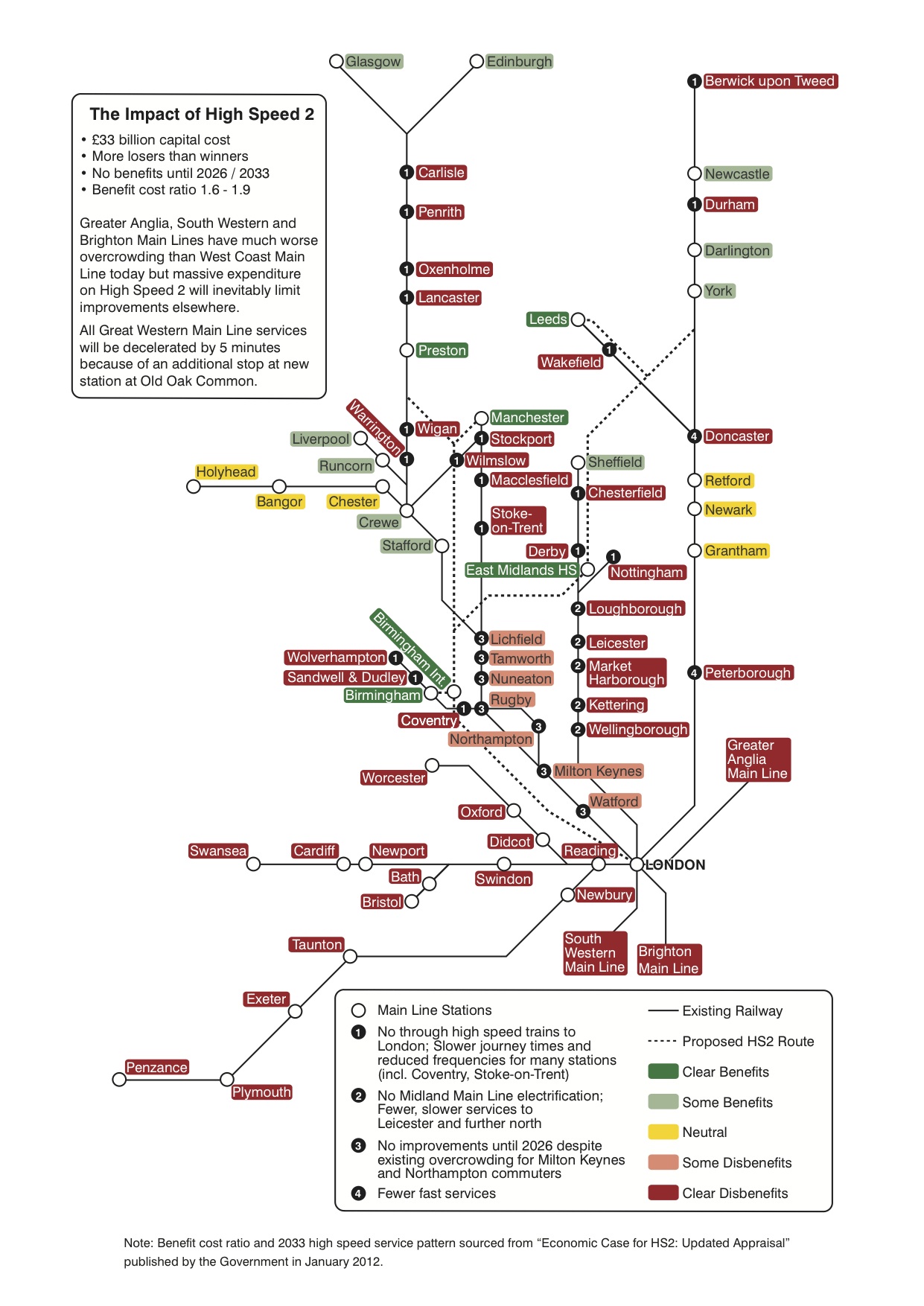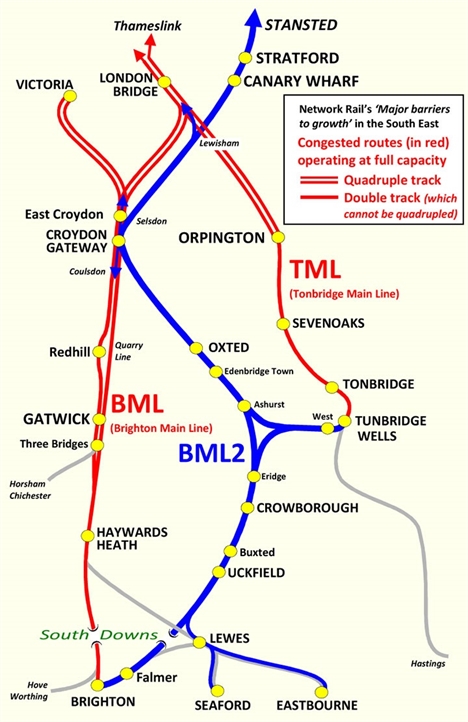Brighton Main Line
The Brighton Main Line is a railway line in Britain. It combines the Victoria Station and London Bridge in London with the situated on the south coast city of Brighton. The route is electrified, around 80 kilometers long and along its entire length. It trains the societies Southern, First Capital Connect, Gatwick Express, Southeastern and Virgin Trains.
History
At the beginning there were no less than six different requests of as many companies to build a railway between London and Brighton. On 15 July 1837, finally, the London and Brighton Railway won ( L & BR) when she got awarded on that day by the British Parliament the concession. The project was designed by the existing line of the London and Croydon Railway ( L & CR), whose final destination London Bridge was to build a route to the south. In addition, two branch lines were provided, one to Newhaven, the other to Shoreham -by-Sea.
The first section was opened, was on 12 May 1840, the branch distance between Shoreham- by-Sea and Brighton (the entire building material had been transported here by ship ). On 12 July 1841, section followed by Norwood Junction Station (connection to the L & CR ) to Haywards Heath. The last section of the original route from Haywards Heath to Brighton could be put into operation on 21 September 1841.
The branch line to Newhaven was not realized until 1846, however, in a further connection to Hastings (East Coastway Line). In the same year the merged companies L & CR and L & BR to London, Brighton and South Coast Railway (LB & SCR). In 1860 the route between London Victoria and Balham was opened. With the opening of the section Balham - Croydon the Brighton Main Line was essentially completed in 1862. Already in 1861 the hitherto most serious railway accident in the UK happened in Clayton Tunnel with 23 dead and 176 injured, as there crashed a -reset passenger train and a following.
Due to an Act of Parliament that allowed only one track to the south of London, the LB & SCR and the South Eastern Railway (SER ) were forced in the first decades of using the route between London and Redhill together. This often led to quarrels, since Redhill was a SER Station. The problems increased such that the LB & SCR between Coulsdon and Earlswood built a bypass route, the Quarry Line ( " quarry - line "). It was opened on November 8, 1899 for freight, on April 1, 1900 for passenger traffic. Even today it is traversed by express trains that do not stop in Redhill.
The LB & SCR began on 1 December 1909, the electrification of its lines. The first was the South London Line with a single-phase AC overhead line. Other routes have been changed within the next three years. 1921, when the Parliament approved the amalgamation of all British railway companies to four companies, the contact wire ranged on the Brighton Main Line to Coulsdon North.
But the newly formed Southern Railway decided to convert the distance on power rail 750 V DC and apply as the same system as the predecessor company London and South Western Railway. In 1929, the entire route network was switched to current rail operations.
On the Brighton Main Line, the individual sections were electrified as follows:
In the southern entrance of the station South Croydon it came after the intervention of an irregular interlocking employee on October 24, 1947 in fog to a collision between two commuter trains. 32 people died, 142 were also injured. This was the worst accident that ever occurred in the Southern Railway.









